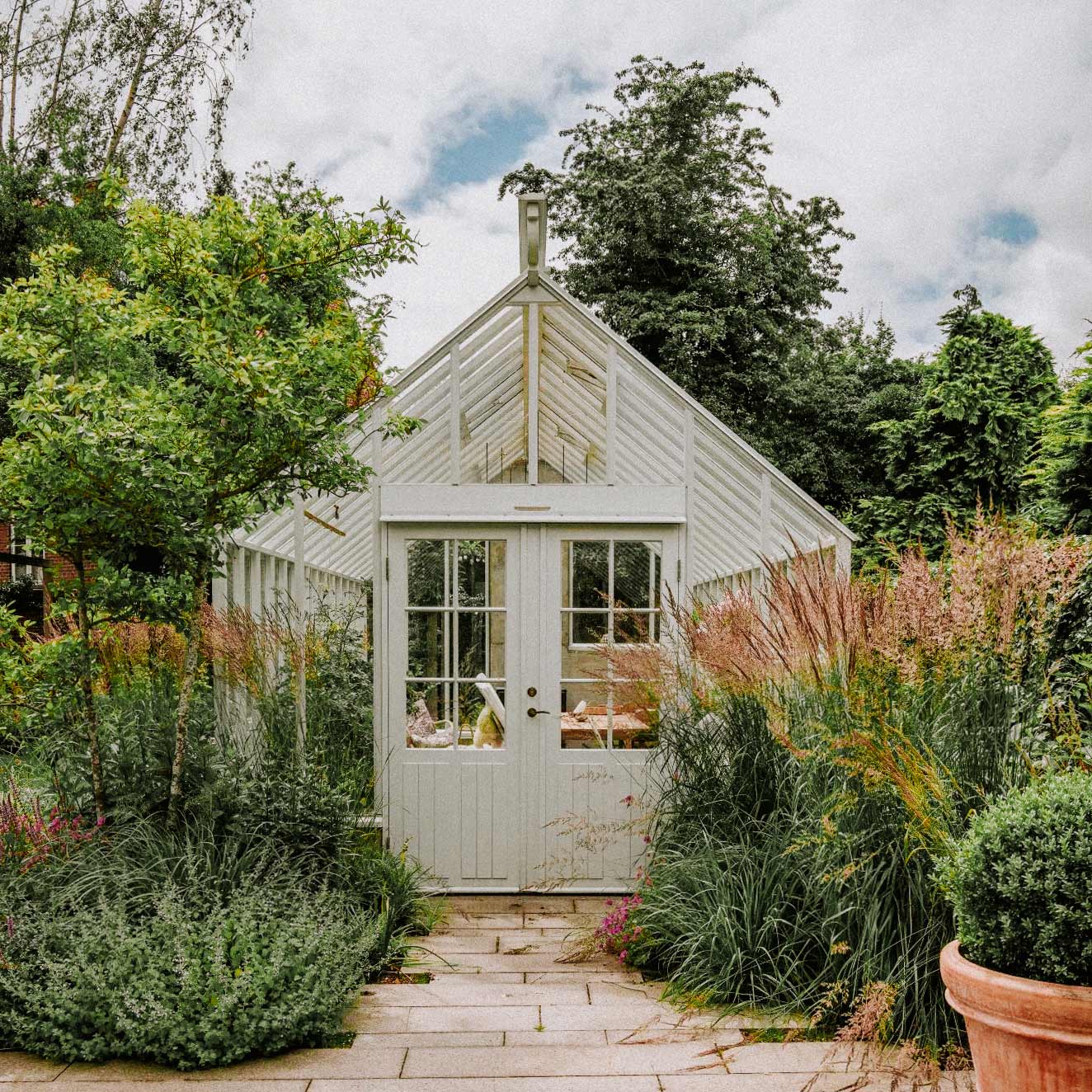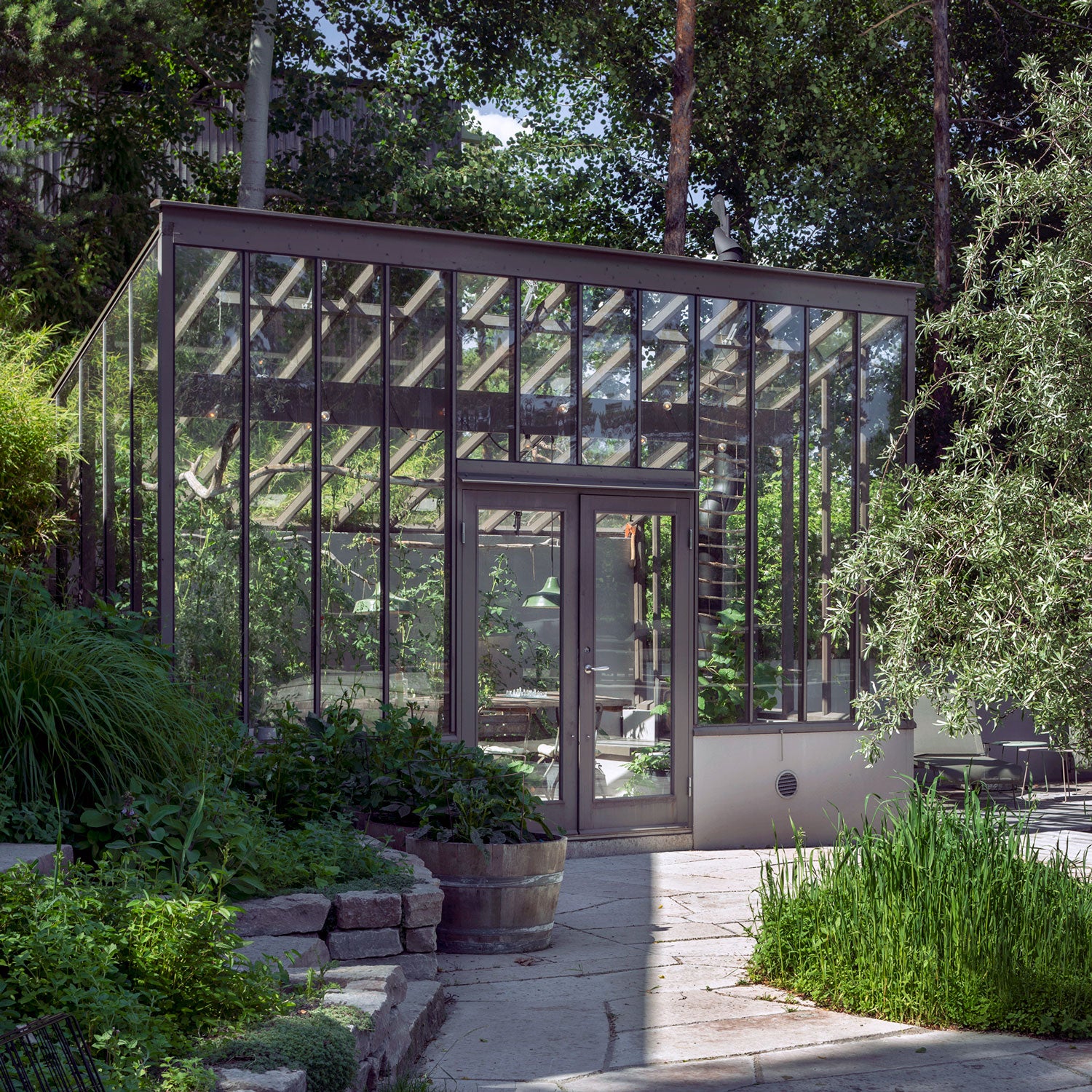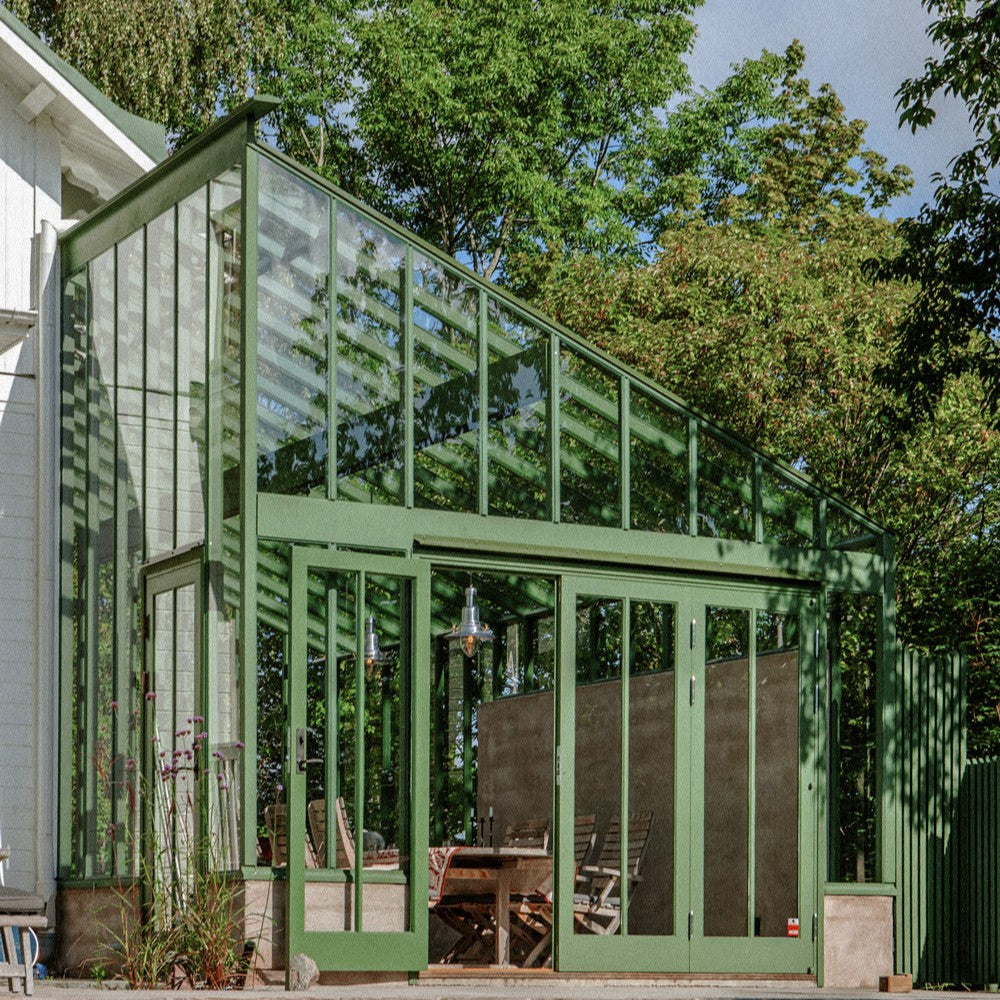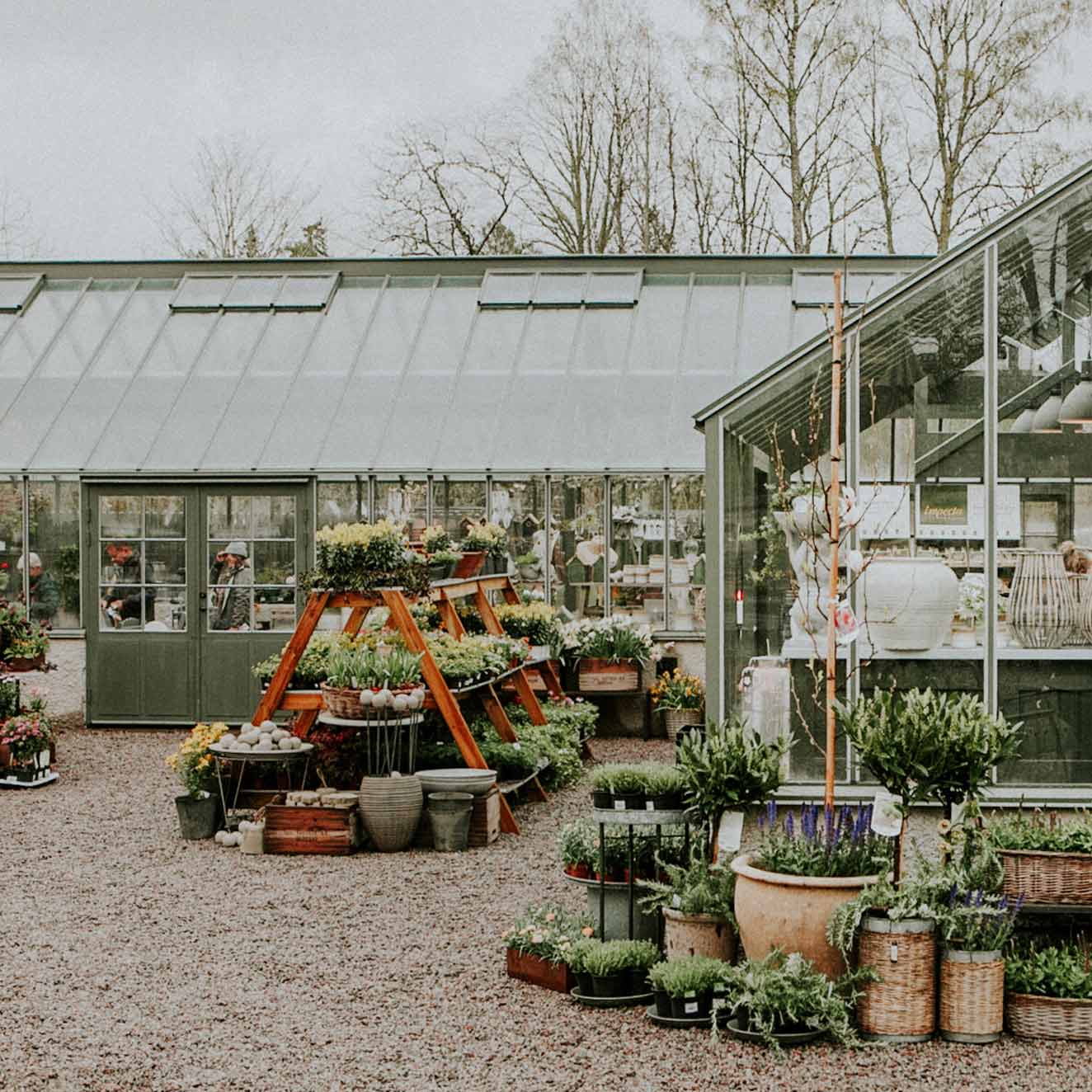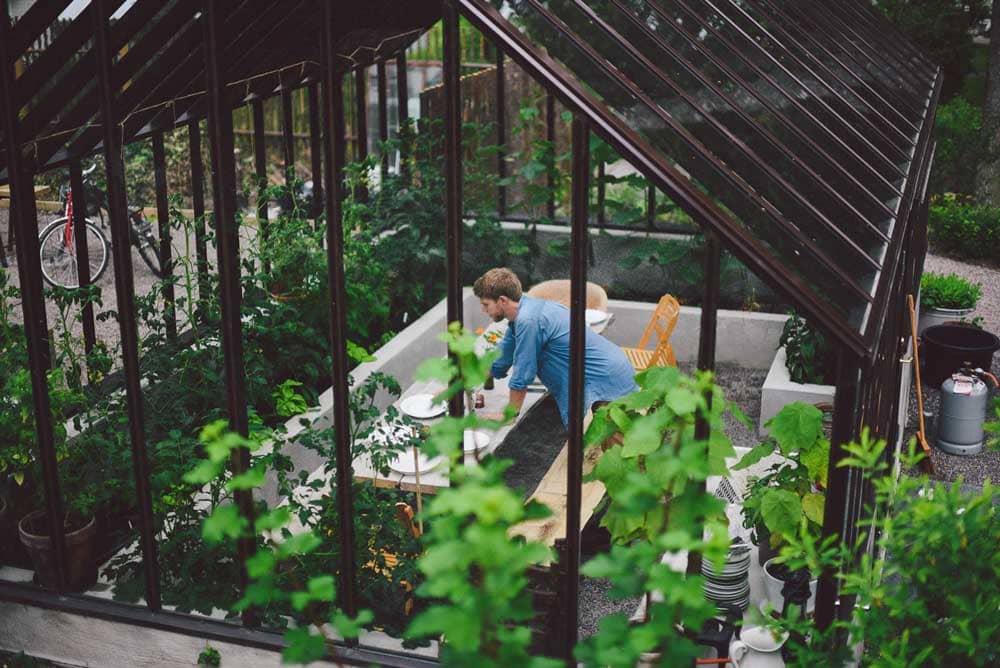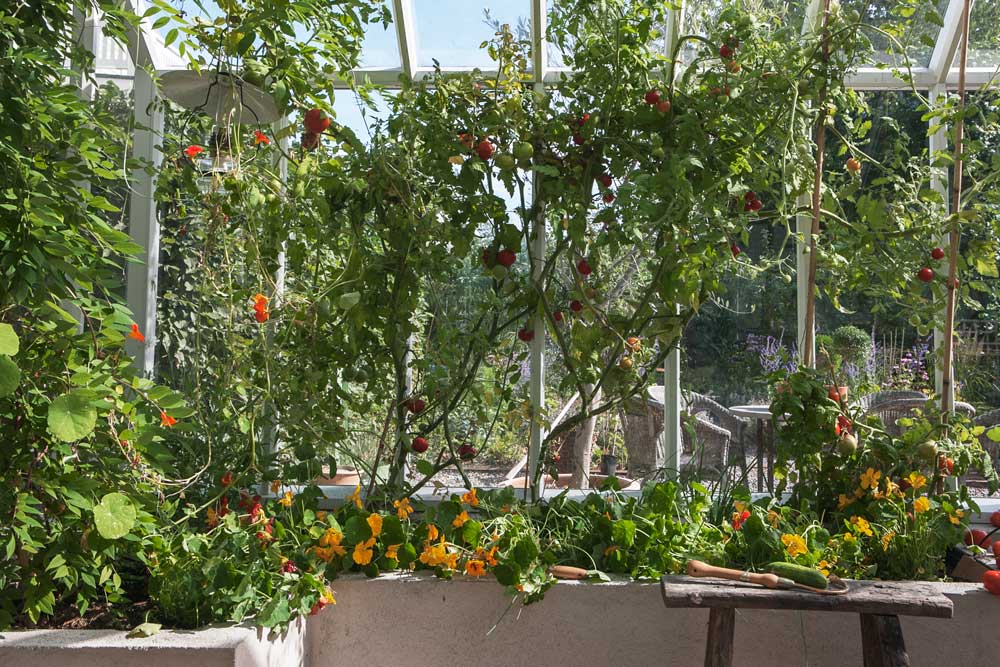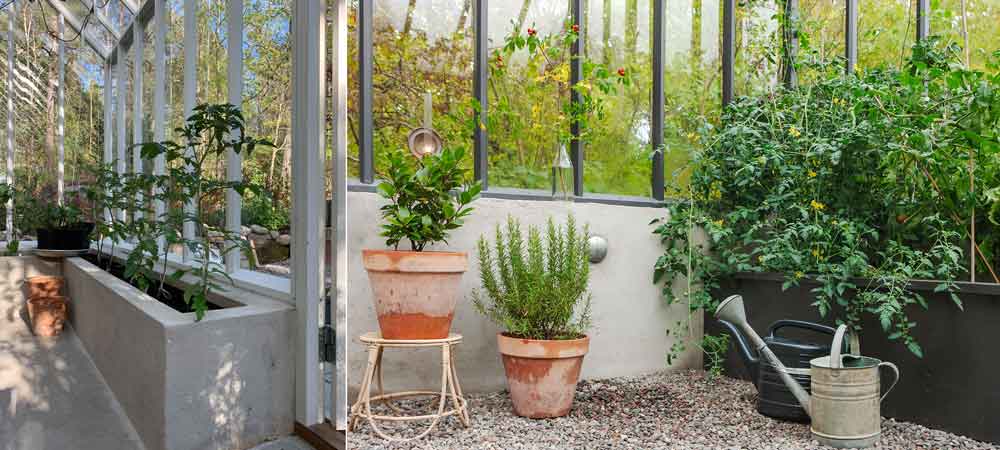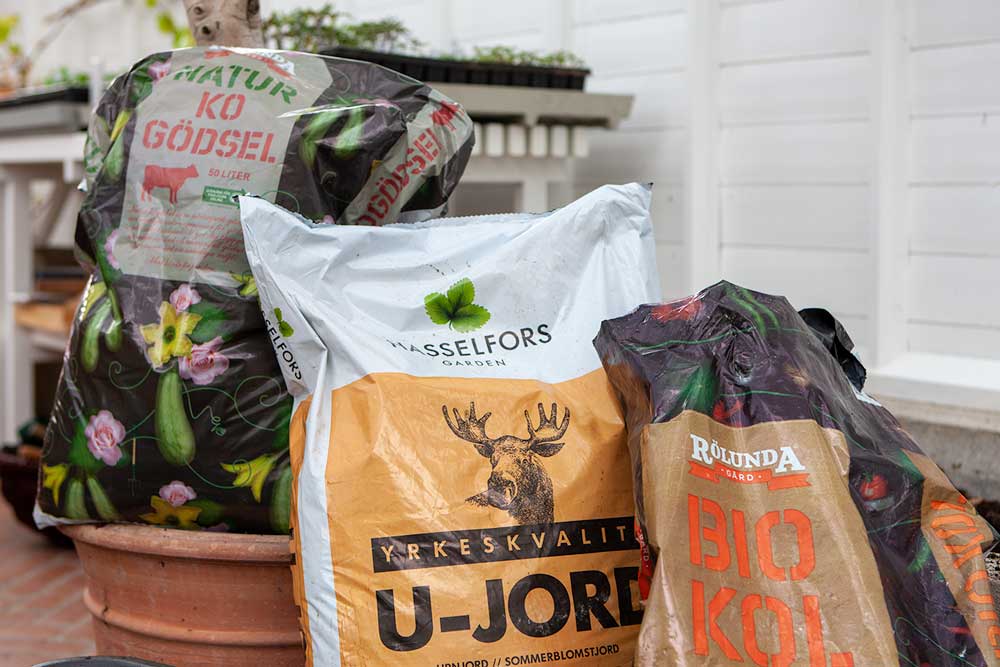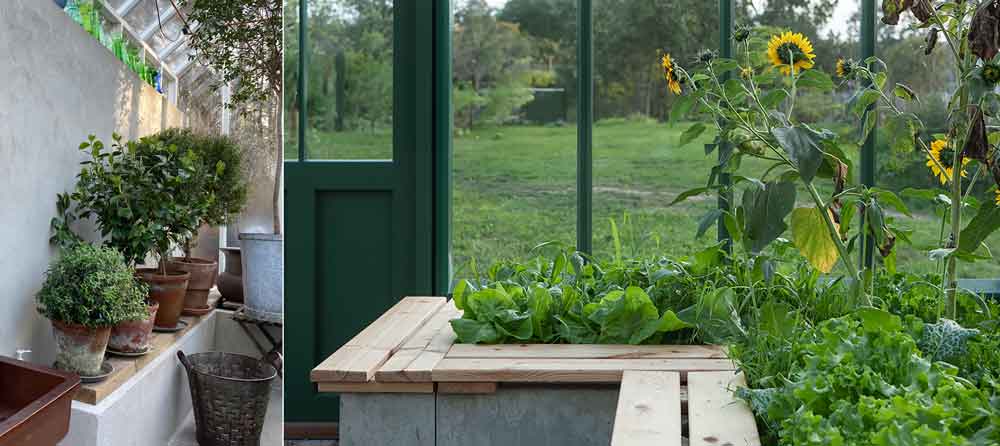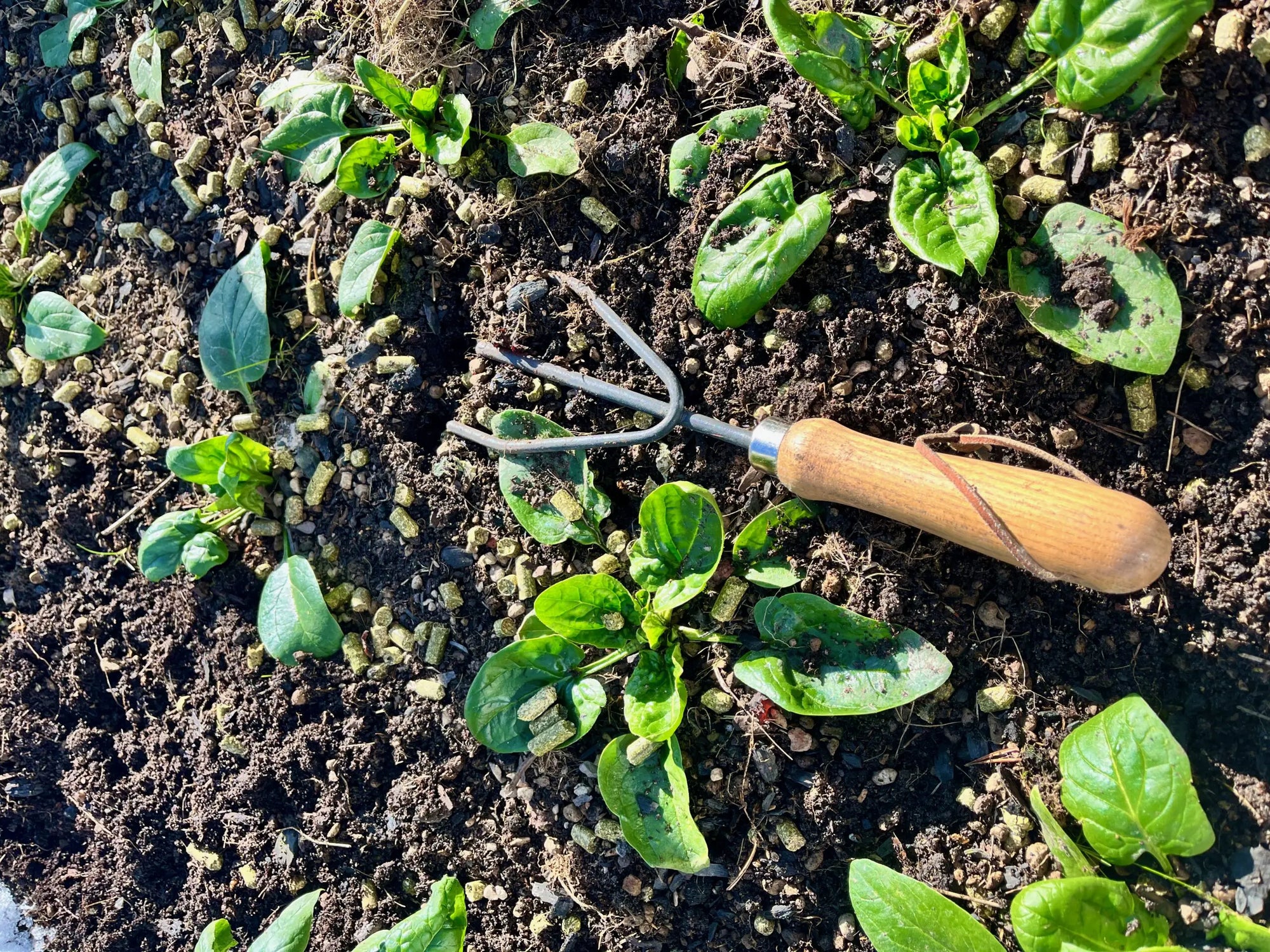
As you make the bed, you get to lie down
Even in a dining room like this, lush beds create a calm and beautiful setting. They are usually made of the same material as the base, but beds can also be made of corten steel, wood or brick.
Spacious growing beds provide the opportunity for a curtain of greenery with a front flowering border.
Proof that even narrow beds are useful. In the picture on the right you can see how a high base allows for a deep and spacious bed. Here the front edge of the bed is made of wood, which gives a soft and warm impression in the greenhouse.
With a focus on a good soil
This spring I am mostly focused on soil improvement. I am one of those who do not change the soil in the beds every year but instead try to work with soil improvement and rest, to get the soil to work over time. The early sowing I am starting now, of leafy greens, I usually sow in existing soil and then water with nutrients until it is time to harvest. It is before the tomatoes and other long-term crops are planted in the greenhouse that I do the major soil improvement. Then I dig in bokashi or alfalfa, add compost and composted manure or seaweed. I need to fill the beds with both nutrients and soil. There is almost nothing I like as much as grabbing around new soil-rich material in the growing bed, you really feel how the power returns.
Rest then? Where does it come in. Yes, occasionally the soil needs a rest from certain plants. In the greenhouse, the challenge is primarily plants that belong to the genus Solanum. This includes tomatoes, chilies, peppers and eggplants. If you grow these plants in the same soil year after year, there is a risk that diseases will take hold. So occasionally the soil is allowed to rest and the solanum plants are moved into pots or grow bags. Or simply not to grow at all and make room for something else.
Properly fixed beds make it easy to achieve a good soil climate. It's not nearly as easy in a confined pot. In my beds, there is mostly crawling and swarming all the time. Of course, it's all the compost I use that brings worms and other helpers, but the size of the bed is important because it makes it easier to maintain even moisture and a moderately warm/cool soil. A narrow bed both dries out, freezes and overheats much faster. And then the swarm moves towards more pleasant places to live.
Here, the greenhouse grower has placed a plank on the bed wall and has a pot shelf in the winter. In another greenhouse, the edge of the wall has been permanently fitted with wood and created plenty of seating.
Yes, I like fixed growing beds, they are like a part of the greenhouse and create a wealth of possibilities. If you are thinking about how to plan your beds, here is a short summary to remember:
- For good growing flexibility - make sure the beds are about 40 cm deep and at least 30 cm wide.
- Make sure all beds have drainage so that water can pass out, even in a greenhouse, accidents can happen and a hose can leak, for example.
- Use a soil for greenhouses or large pots. It should have a lot of structure in it and be rich in humus.
- Improve your soil with humus and fertilizer every spring and also during the season, for example through cover crops with grass.
- Add good microlife and a stable bacterial flora through regular compost and bokashi.
- Does the soil in the beds need a rest – cover the soil and put beautiful pots in the bed for a year. See the beds as an opportunity for variation – use them imaginatively and freely!
